TV Eye
Published in Issue 6 (Nov/Dec 2005), Reviews, Volume 13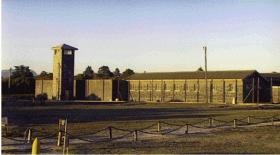
TG4’s Séideán Staire series offers a platform for mainly foreign-language historical documentaries that rarely get an airing on mainstream television in English, including a study of Robben Island prison in South Africa.
TG4 and television history
In a recent article in the Irish Times Magazine Ruadhán Mac Cormaic described the unexpected resurgence of television history. This is true across all the main British channels. In recent years Simon Schama and David Starkey have become public figures by offering magisterial surveys of British history and the history of the English monarchy. In fact the phenomenon is far wider in scope. Channel 4 has been the main source of a large number of very successful series on ancient history, from Helen of Troy to the later Roman Empire. As Mac Cormaic pointed out, new technology such as computer-generated imagery has made visual presentation of historical reality much more immediate and exciting. Other initiatives involving new kinds of programming have also multiplied in recent years, including highly dubious ‘reality’ history series such as The Colony, which throw individuals into historic environments and watch as they inevitably fail to adapt. More interesting is the series The People’s War, currently running on BBC, which is a sort of oral history project, aimed at recording the memories of the remaining British survivors of World War II. The picture from across the channel, then, is one of growth, diversity and popularity.
However, one might question the extent to which this is really pushing the frontiers of television or history. David Starkey’s programmes are very old-fashioned in scope and delivery. A brilliant if somewhat pompous lecturer of the old school, Starkey’s history is a history of ‘kings and queens’. It is also a history of England, rather different from the wider perspective that Schama adopted, and stresses the traditional themes in an almost nostalgic way. If, as Mac Cormaic suggested, Irish television is now looking for a Schama or a Starkey, then the idea raises all sorts of intriguing questions about the public presentation of Irish history in this way.
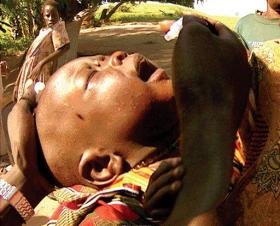
A history of polio. (TG4)
Given the degree to which history still generates immense controversy in Ireland, how would the public react to a grand narrative constructed on traditional lines? The most successful experiment in this area in Ireland took place in the 1960s. The Course of Irish History, which in book form has never been out of print, owed its strength to the fact that it was a collective work that offered the insights of a new generation of scholars to the general public via the new medium.
Irish television has reacted very well to the greater appetite for history, although there are substantial differences between the trends in Irish programming and what’s happening in Britain. Much of what has been appearing on screen, particularly in the excellent Hidden History series, has been biographical. Indeed, the pioneering work here was laid by Seán Ó Mordha’s series of acclaimed biographies of Irish writers made in the 1980s and 1990s. A second major focus has been on the history of Ireland in the twentieth century. Important recent series such as Seven Ages, Haughey and most recently Altered State, dealing with the recent history of church–state relations, have all tapped into a real need to understand the nature of contemporary Irish society. Much of British television history has seemed to be preoccupied with World War II, Trafalgar, the Empire and the roots of English or British distinctiveness at a time when perhaps a majority of English people are suspicious of Britain’s relationship with Europe. The Irish focus is more on the dynamics of twentieth-century Irish politics and religion.
A refreshing contrast to all of this from an unexpected quarter has been the performance of TG4 in recent years as perhaps the principal broadcaster of historical material in Irish television. A small station with a statutory commitment to Irish-language broadcasting and a tiny budget, TG4 has shown itself to be highly inventive in expanding the range of programming that it offers and has established an important niche for itself in documentary broadcasting. The Séideán Staire series offers a platform for mainly foreign-language historical documentaries that rarely get an airing on mainstream television in English. Excellent subtitling, the retention of English-language footage and the provision of an Irish-language commentary make these documentaries quite accessible to a non-Irish-speaking audience. The range of programming is impressive.
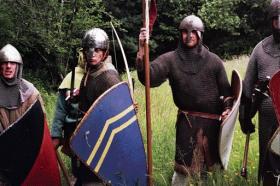
Daibhí Ó Croinín (NUI Galway) has contributed to a number of programmes on medieval Irish history, including a series on the history of the Normans and, most recently, a biography of Strongbow. (TG4)
This autumn TG4 has broadcast a study of Robben Island prison in South Africa, based on the experiences of three former prisoners, a moving account of Tibet under Chinese occupation and a highly critical and original look at the evolution of Fidel Castro’s political ideas. There was also a two-hour docu-drama on the life of Martin Luther, a documentary on the history of polio and a look at the historical evidence surrounding the story of Goliath. Daibhí Ó Croinín, a historian at NUI Galway who has been involved with the Séideán Staire series since its inception, has also contributed to a number of programmes on medieval Irish history, including a series on the history of the Normans and, most recently, a biography of Strongbow. TG4’s output demonstrates the wealth of material that is available through international television networks, such as the Franco-German Arte channel. Although its output inevitably reveals the budgetary constraints of a small station, it highlights areas of programming that were hitherto neglected by the main public service broadcaster.
The Séideán Staire series is only part of what TG4 has broadcast that is of interest in this context. The Cogar series mainly consists of home-produced programmes reflecting on aspects of the Irish experience. Idir Dha Shaol is an award-winning documentary about the experience of a Connemara man who emigrated to London in 1968. As an insight into the history of the Irish diaspora the film was acute and unsentimental. Another astonishing film broadcast recently was Concerto Caitlin Maude, an evocation of the life and personality of a poet and artist who seemed to embody the radicalism of the avant-garde of the late 1960s. There’s no doubt that the search for a Schama or a Starkey will influence the future of television history in this country in the near future.
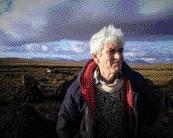
The Cogar series has produced Idir Dha Shaol, an award-winning documentary about the experience of a Connemara man who emigrated to London in 1968.
The directions being explored on a shoestring budget by TG4 need to be encouraged and perhaps emulated.
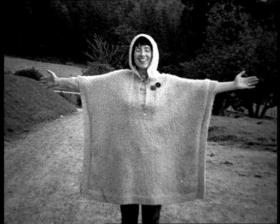
Concerto Caitlin Maude, an evocation of the life and personality of a poet and artist who seemed to embody the radicalism of the avant-garde of the late 1960s (top). (TG4)
Eamon O’Flaherty lectures in history at University College Dublin.
















